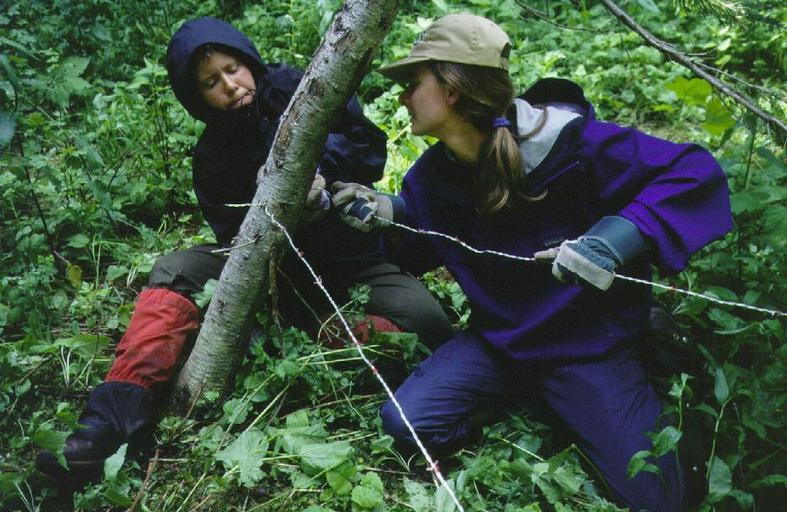MAKE A MEME
View Large Image

| View Original: | Setting_up_a_hair_snag_station_(Northern_Divide_Grizzly_Bear_Project).jpg (928x604) | |||
| Download: | Original | Medium | Small | Thumb |
| Courtesy of: | www.flickr.com | More Like This | ||
| Keywords: bear grizzly grizzly bear grizzlybear usgs science research glacier national park glaciernationalpark national park nationalpark nps national park service nationalparkservice outdoor Scientists setting up a wire hair snare. Barbed wire hair snag were used to collect hair samples from grizzly bears throughout the Crown of the Continent Ecosystem as part of the (Northern Divide Grizzly Bear Project. This project used this technique in conjunction with statistical models to estimate the number of grizzly bears inhabiting the ecosystem, which includes Glacier National Park. DNA was extracted from from bear hair collected along survey routes and from systematically positioned hair snag stations. As a result of this project, and after collecting and analyzing a staggering 34,000 hair samples, it was estimated that 765 grizzly bears make their home in the Northern Continental Divide Ecosystem. USGS photo. www.nrmsc.usgs.gov/research/NGSbear_monitoring.htm Scientists setting up a wire hair snare. Barbed wire hair snag were used to collect hair samples from grizzly bears throughout the Crown of the Continent Ecosystem as part of the (Northern Divide Grizzly Bear Project. This project used this technique in conjunction with statistical models to estimate the number of grizzly bears inhabiting the ecosystem, which includes Glacier National Park. DNA was extracted from from bear hair collected along survey routes and from systematically positioned hair snag stations. As a result of this project, and after collecting and analyzing a staggering 34,000 hair samples, it was estimated that 765 grizzly bears make their home in the Northern Continental Divide Ecosystem. USGS photo. www.nrmsc.usgs.gov/research/NGSbear_monitoring.htm | ||||